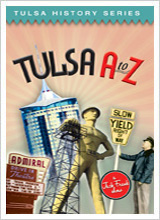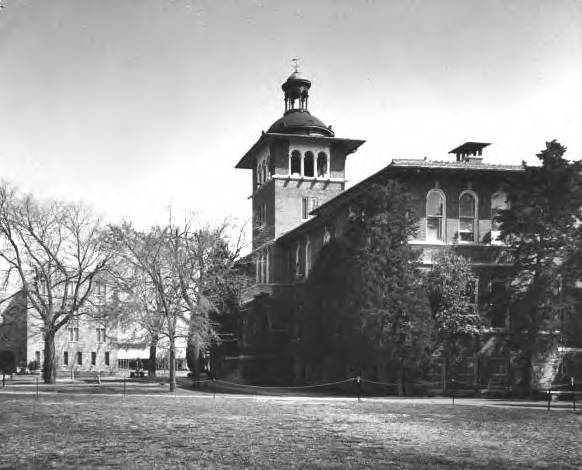Tulsa History: November 2009 Archives
Tonight (November 30, 2009) also brings another fascinating glimpse of Tulsa's past to the Circle Cinema in Whittier Square, Admiral Blvd. and Lewis Ave.:
RadioTU presents a screening of "Going to College", a film about life at The University of Tulsa in the forties, on Monday, November 30 at 7:00 pm at the Circle Cinema. The voice of Dr. Ben Henneke is heard as a high school couple visits classrooms, campus facilities, and Greek houses as they looked sixty years ago. Shuttles will depart from the south side of ACAC for the Circle, located at 3rd and Lewis, beginning at 6:30 pm. For more information, call the Circle Cinema at 585-3456.Admission is free, and the event is open to the community.
The screening is sponsored by The Office of the President of the University of Tulsa, Public Radio Tulsa (KWGS / KWTU), and radioTU (student radio station at TU). The Circle Cinema Foundation was kind enough to donate the space at the Circle Cinema for the event.
Photo of TU's Kendall Hall, 1950, from the Beryl Ford Collection.
 Tonight at 7:30 on KOTV is a half-hour preview of the latest from Jack Frank's wonderful Tulsa Films series: "Tulsa A to Z." Each letter of the alphabet provides a jumping-off point for explaining a fascinating, often obscure aspect of Tulsa history and culture. The broadcast will air on OETA's statewide network Wednesday at 7 p.m.
Tonight at 7:30 on KOTV is a half-hour preview of the latest from Jack Frank's wonderful Tulsa Films series: "Tulsa A to Z." Each letter of the alphabet provides a jumping-off point for explaining a fascinating, often obscure aspect of Tulsa history and culture. The broadcast will air on OETA's statewide network Wednesday at 7 p.m.
Jack sent me a preview copy of the DVD last week. My favorite letter so far: "X is for Xanthus," which is not only about this particular oddly named avenue, but Tulsa's street naming system in general. I was also fascinated to learn about a collection of historic photos owned by Mayor-elect Dewey Bartlett Jr. Famed Tulsa eateries like White River Fish Market, Knotty Pine BBQ, Nelson's Buffeteria, and J.J.'s Gourmet Burgers all earn a place in the alphabet, and so do entertainment venues like the Admiral Twin drive-in and the Spotlight Theatre's long-running production of The Drunkard.
The DVD arrives just in time for Christmas, and you can find it at Steve's Sundry, Dwelling Spaces, SpiritBank, QuikTrip, and Borders, and online at tulsafilms.com.
Here's a preview:
Pastor J. H. Dotson during the construction of Mt. Zion Baptist Church. The photos appear to show the remnant of the ruins of the 1921 structure, which had been roofed in 1937 and was being used for worship, being incorporated into the new structure, c. 1948. Beryl Ford Collection/Rotary Club of Tulsa, Tulsa City-County Library and Tulsa Historical Society.
I was looking for something (the National Park Service's "1921 Tulsa Race Riot Reconnaissance Survey," a 2005 publication that identified sites of importance related to the riot, which used to be on the web, but is no longer).
I found something else: Mt. Zion Baptist Church's registration form for the National Register of Historic Places. The application was written in April 2008 by Cathy Ambler, Ph.D., a preservation consultant based in Tulsa.
The application, accompanied by maps and photos, both current and historical, tells the story of Greenwood before, during, and after the riot through the story of Mt. Zion. The church's brand new edifice, dedicated in April 1921, was destroyed on June 1, 1921. The membership met in members homes and, later, in a roofed section of the building's ruins until they raised enough money to pay off the debt from the destroyed building and to build a new structure, which was not complete until 1952.
The document is worth reading for a synopsis of the story of Greenwood from its earliest days, through riot, rebuilding, and urban removal, and as a tribute to the indomitable spirit of the members of Mt. Zion.
MORE:
Here is Mt. Zion Baptist Church's webpage on the history of their building.
Two weeks after the riot, Walter F. White, a reporter for The Nation published an on-the-scene report of the causes, its aftermath, and the corrupt and lawless state of Tulsa in 1921.


